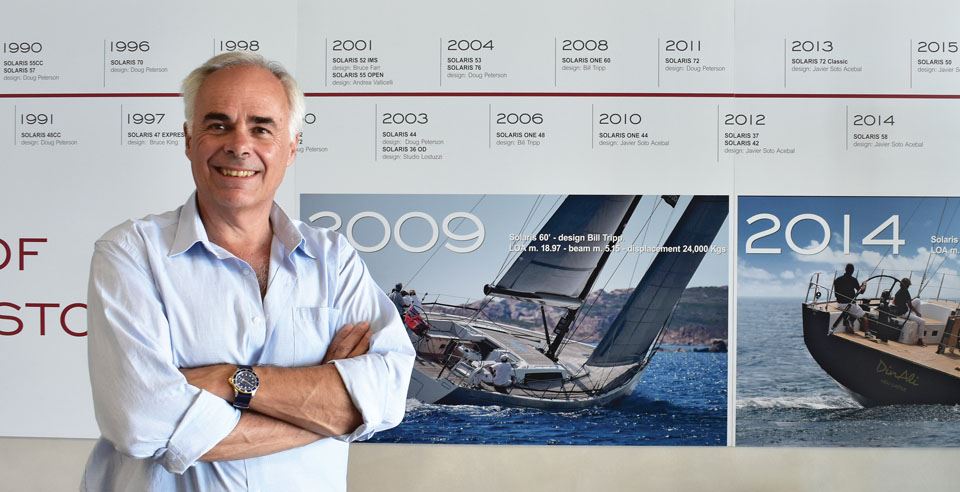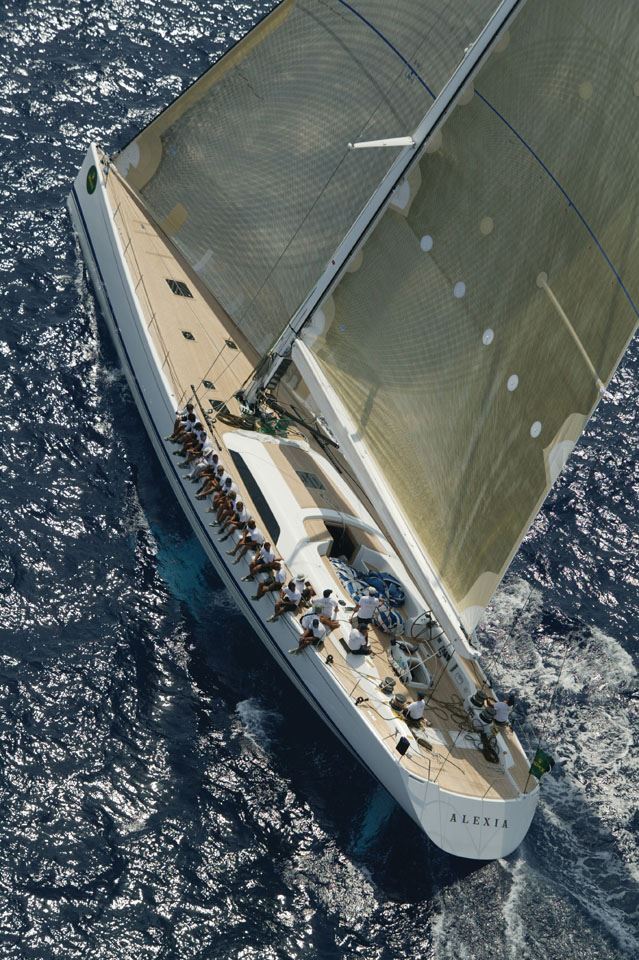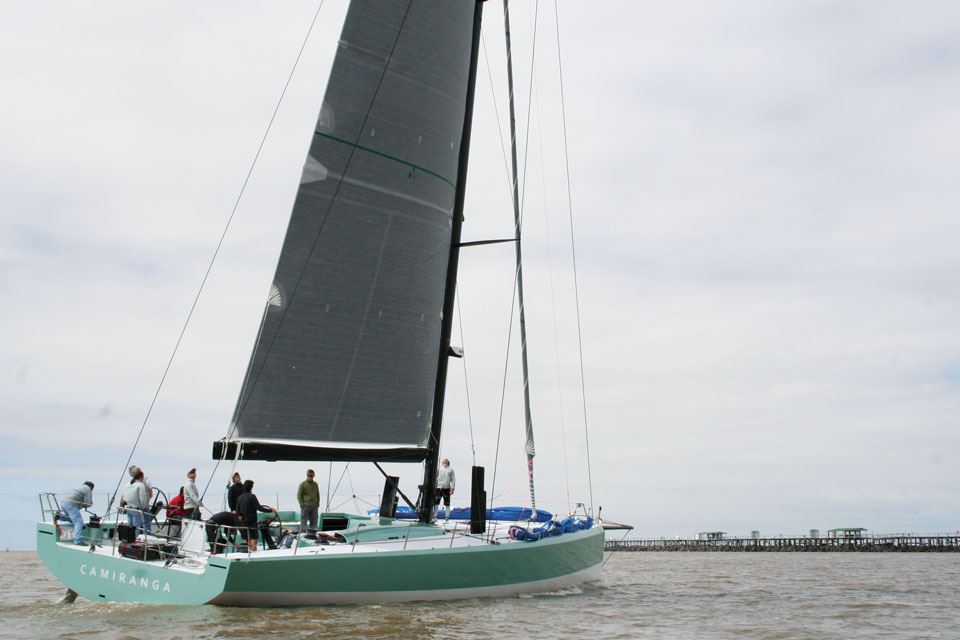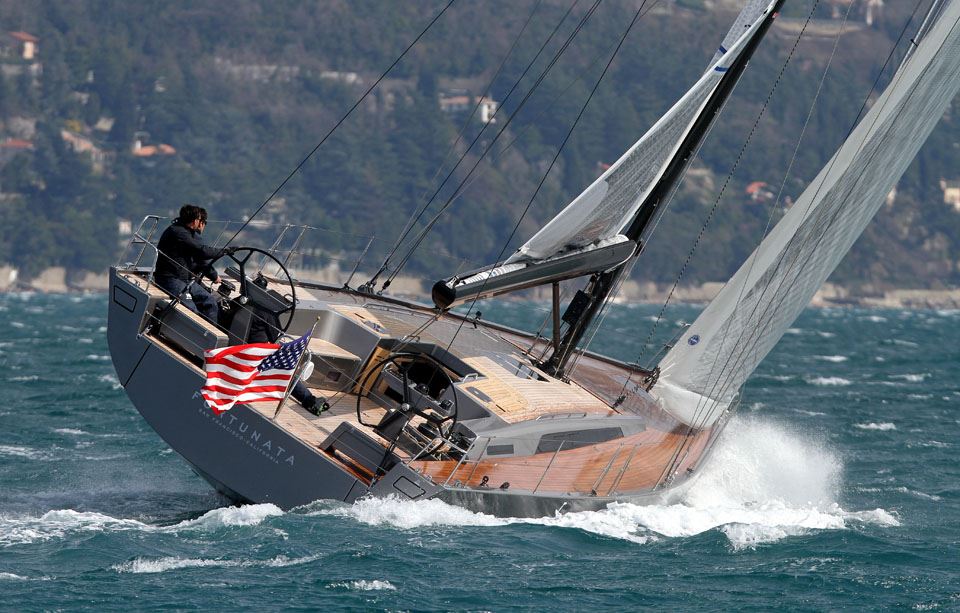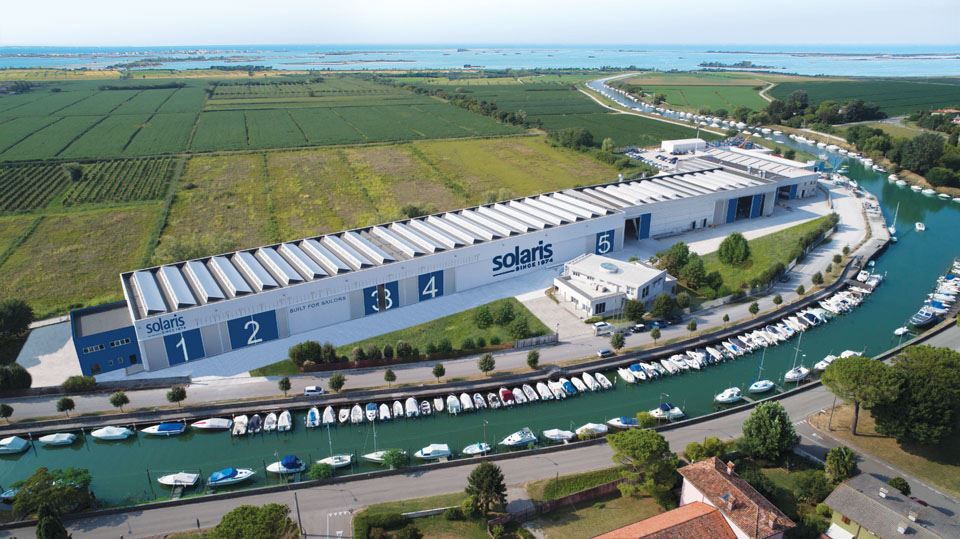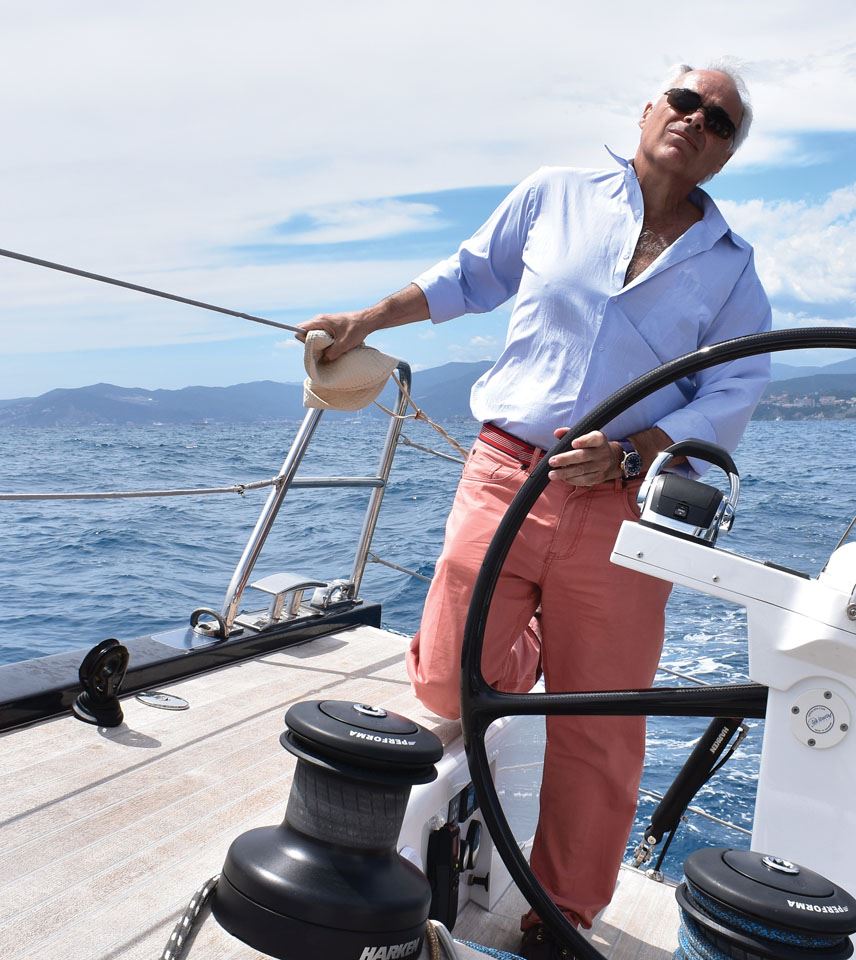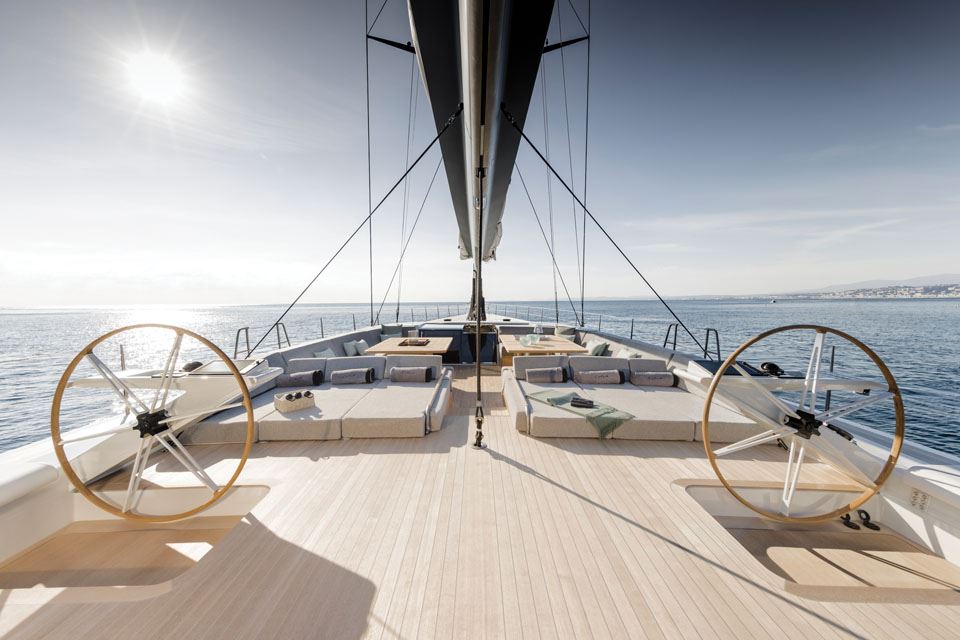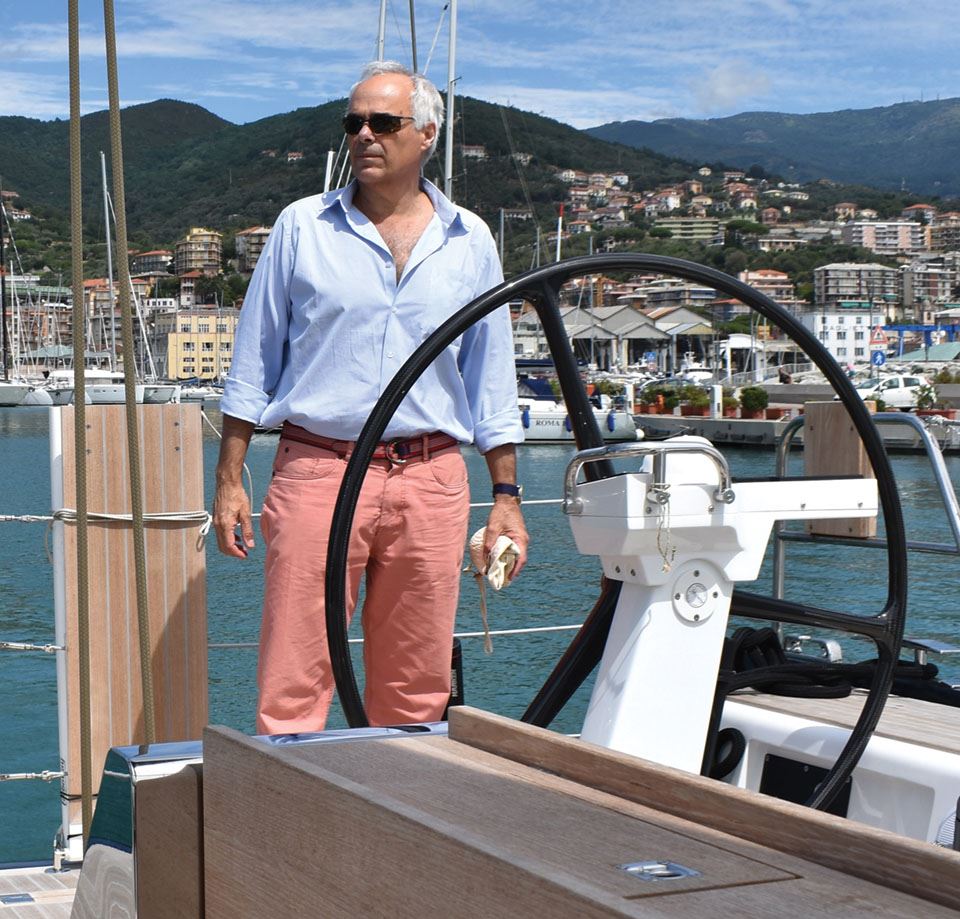Your Local Broker, Internationally
Berthon UK
(Lymington, Hampshire - UK)
Sue Grant
sue.grant@berthon.co.uk
0044 (0)1590 679 222
Berthon Scandinavia
(Henån, Sweden)
Magnus Kullberg
magnus.kullberg@berthonscandinavia.se
0046 304 694 000
Berthon Spain
(Palma de Mallorca, Spain)
Simon Turner
simon.turner@berthoninternational.com
0034 639 701 234
Berthon USA
(Rhode Island, USA)
Jennifer Stewart
jennifer.stewart@berthonusa.com
001 401 846 8404
Yacht Designer, Javier Soto Acebal
by Raffaele Burgio, Berthon in Italy, www.sotoacebal.com
Berthon’s man in Italy, Raffaele Burgio, is an experienced project manager working with Southern Wind, Mylius Yachts and many other Italian shipyards. He took the time to chat to yacht designer Soto Acebal whose growing reputation for designing glamorous, fast and cutting edge sailing yachts is well known. Berthon represent Solaris in the UK and USA and so we are converts…
How did it all start? How did you get into sailing?
When I was young, I studied in an English school in Buenos Aires, a school with strict rules. It was mandatory to play rugby but sailing was not an option. I did not like any sports involving a ball! One day by chance, I was in a sailing club for lunch. Before that I had never seen a sailing boat. A sailing instructor invited me to sail with him on a dinghy for a short test. After 10 minutes on the boat, I realised that sailing would be my life, my passion and my work. I started to practice sailing straight away. I’ve always been an aesthete and so I look at everything from an aesthete point of view be it car, pen, house or indeed yacht.
Tell us about your training as a yacht designer…
I was born in the same city as German Frers. I studied at the university and graduated as a Marine Mechanical Engineer. The degree course was 7 years long and very demanding and tough. During my time at university I stopped going sailing. The marine engineering course was focused on commercial ships, warships and fishing vessels, nothing to do with sailing yachts. Sailing was my passion so in my free time I started to read a lot of books about sailing yacht design. There was no internet at that time so reading books was the only way for me to educate myself and to keep up to date with yacht design. One of the most important books about yacht design at that time was “Skene’s Elements of Yacht Design” and that became my Bible. The book was always beside my bed. When I became professor of Naval Architecture at the university, I insisted that all my students read that book.
JAVIER SOTO ACEBAL
Tell us about the years at Frers Yacht Design and the most exciting project you worked on there…
In 1986 I started to work in a design studio in Buenos Aires and during that period I worked on many designs for Micro and Quarter Tonners that went on to win many local regattas. Some friends of mine knew German Frers, as they had done a lot of yacht racing with him. They invited me to sail with them and German Frers. German took charge of his father’s office in 1970, after returning from a training period in the USA working with Olin and Rod Stephens at their office in New York and in the 80’s he was already one of the most famous designers in the world. We started to get to know each other and in 1987 I joined the German Frers design office. I worked there for eleven years, until March 1998. At that time many of the most important projects born from the pen of German Frers were realised. We designed prototype IOR class yachts, Nautor Swans and Maxi yachts.
WALLY 100′ ALEXIA
With that great experience, why did you open your own design house?
While I was working for German, I was also a professor at the University of Buenos Aires as a professor of Sailing Yachts Hydrodynamics and Sailing Yacht Design. I taught the final part of the design process of a sailing yacht and in this period, I designed a 25 footer racing boat together with my students. She was very aggressive. We then built her and she was sailed by my students. I asked German for permission to do this and, of course, he gave it. The yacht was a successful project and as a result my first client commissioned me to design him a yacht, but of course I was still working for German Frers. I made the decision to open my own design studio and start my own career as naval designer in 1998. I designed many racing yachts to start with and one of the most successful projects was the Soto 40′. This design has been winning races for over 20 years! I will always be grateful to German Frers for having the opportunity work with him.
65′ CANTING KEEL RACER CAMERINGA
What do you love most about your job, and what is there that you do not enjoy?
I love pretty much everything about my job. One of the things that really makes me happy is when I propose a project to a yard and this is developed and improved by them. I’m very pleased when a project that I have submitted is enhanced thanks to the ideas of the other people involved. For me, teamwork is fundamental to success. What I dislike is when a project is not properly developed for commercial or “political” reasons. Sometimes yards and clients follow the market, and often this is at the expense of the philosophy and beauty of the project.
SOLARIS 50′
What are your favourite projects to date, sail and power?
To date 80% of my designs have been sailing yachts and 20% power yachts. I have many favourite projects. There are a variety of reasons that I am attached to certain designs – the victories list for a race boat or sometimes for other more “technical” reasons. Some of them are favourites because they were projects where everything went smoothly from the beginning. There are many factors that make a project “lucky” and make it go well. Often both myself and the client are super excited about the project, and if the team I’m working with gels with everyone playing their part, then the project evolves in the right way. It is then I have a “lucky” project. Lucky projects for me have been the Wally 100′ ALEXIA, the Solaris 50′ project, the Wally 130′, the 65′ canting keel racer CAMERINGA and the latest is the recently launched Solaris 111′.
SOLARIS YARD IN AQUILEIA, ON THE SHORES OF THE VENETIAN LAGOON.
Tell us about your relationship with Solaris…
This was good luck for me. In 2008 Luca Bassani talked to the owner of Solaris Yachts about me. I already designed some Wallys for Mr. Bassani. So, I had a call from Italy and they asked me for a face to face meeting. I was in Patagonia so I took a plane the next day to Italy and met Michele Ricci and the rest of the managers. At the end of the meeting, they weren’t happy with my proposal and I was almost sure that I wouldn’t get the job. Overnight at the hotel I made a lot of new sketches by hand trying to draw what they wanted. The following day I showed them my “night-work” and they said: this is exactly what we’re looking for. She was the Solaris 44′, year 2008/2009. From that day on, we have worked on many projects together. Working with Michele Ricci and his team is very hard, they are very demanding, but at the same time very cooperative and committed to getting the best result. On the Solaris 50′ project we did around 25 tests before the final approval from Solaris! I love working for them and every time I’m in Aquileia I feel at home. Everyone at the yard, is fantastic. For me it is like being part of the Solaris family.
JAVIER SOTO ACEBAL SAILING THE SOLARIS 55′ IN FRANCE
What is the most important development in yacht design build that you have seen in the past 10 years and what do you predict will be the most important trend in the next 5 years?
In the past few years I’ve become more focused on the development of my projects, which are orientated towards performance sailing. The yachts have become lighter thanks to new construction technologies and materials. Beam has increased and it is carried all the way aft to the stern giving more volume internally and improving the hydrodynamics of the yacht. The reverse bow has become more common. The use of the topside’s chine gives very powerful stern sections that dig in to provide additional stability when the yacht heels. Hull shapes have changed significantly. These features as well as new concepts in design provide more safety and comfort on board. For the future, I see many changes coming in different areas of yacht design. Taking inspiration from the last Volvo and Vendée Globe yachts, all the concepts and technologies used on these will bring improvements in tomorrow’s cruising yachts.
We’re working on a new project, a fast cruiser where we moved the mast aft giving the yacht less mainsail area which provides more safety and better control of the yacht. Forward she has a bigger self-tacking jib and Code 0 for more speed in light airs. For me, the innovations that I will focus on in the future will be related to safety, comfort and performance.
RECENT LAUNCH OF THE SOLARIS 111′
So what do you do in your spare time?
I spend most of my time working and designing yachts. During my down time, I switch off totally and I’m an avid reader, mainly of books about philosophy and quantum physics. I have a house in Patagonia which is my sanctuary. When I am there, I fish on the river or the lake, go sailing on a small boat that I have and ride a lot. Life in the country enables me to switch off.
Read Another Article
Download The Berthon Book 2021-2022 XVII (12.4MB)

